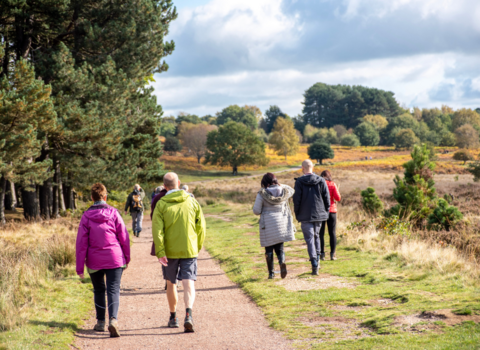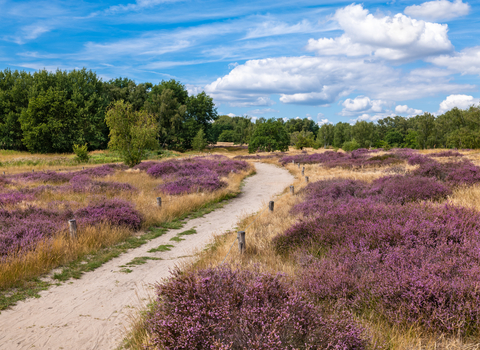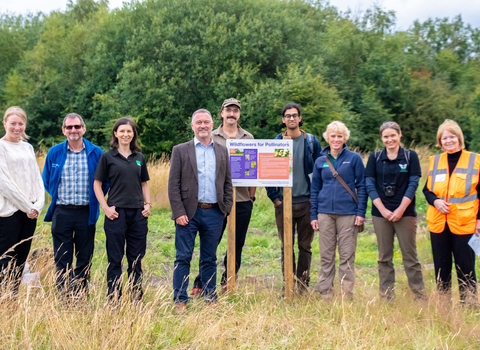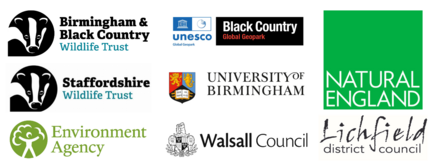What is Purple Horizons?
Purple Horizons is an award-winning, national flagship nature recovery project that aims to restore and connect habitats across the Walsall and Staffordshire countryside. Spanning up to 12,000 hectares, this partnership project is working to create a more resilient landscape by linking Sutton Park National Nature Reserve and Cannock Chase Area of Outstanding Natural Beauty, which is home to the largest remaining heathland in the Midlands.
We are working with landowners, businesses, local authorities, environmental charities, research institutions and government agencies to restore fragmented heathlands, grasslands, woodlands and wetlands. By strengthening habitat connectivity and improving biodiversity, we are helping to create a landscape that is more resilient to climate change, supports local wildlife and enhances community wellbeing.

What We've Already Achieved
- 42 hectares of new habitat created – with support from farmers, landowners and conservationists.
- Rare pollinators returning – including the nationally threatened Tormentil Mining Bee, which began using newly created sandy nesting habitats within six months.
- Sustainable land management in action – our work is already benefiting key crops like oilseed rape, field beans, orchard fruit, and soft fruit by increasing pollination.
- Funded machinery to enable seed collection, mowing, scrub-control and further habitat restoration, some of which is suitable for volunteers to operate
- Developed new interpretation panels to explain the importance of the geology and the underlying soils to the restoration of heathland within the project area

Funding, Support, and Financial Benefits for Farmers
Farmers, golf course owners and land managers can access free surveys, funding and financial incentives to integrate nature recovery into their land management practices.
- Biodiversity Net Gain (BNG) & Habitat Banking – Farmers can earn between £15,000 and £35,000 per unit for creating wildlife-friendly areas that developers can use to offset environmental impact.
- Countryside Stewardship & Sustainable Farming Incentive (SFI) – Payments for actions such as improving soil health and/or water quality, planting hedgerows, field margins, wildflower restoration, and enhancing biodiversity.
- Additional funding opportunities available for: Catchment sensitive farming, Facilitation Funding, Landscape Recovery, and more.

Key Benefits of Participation:
- New income opportunities – Access funding streams that support both farm productivity and biodiversity.
- Greater resilience to climate events – Restored landscapes help mitigate flooding, drought, and soil erosion.
- Healthier local communities – Improved green spaces contribute to mental and physical wellbeing.
- A landscape with unique character and species – Preserve the natural heritage of the Midlands for future generations.
Click here to download our Opportunities for Landowners Leaflet.

Find out more
For more information on how you can support Purple Horizons, contact our Senior Planning & Biodiversity Officer, Dr Kayla Paulson, at:
- Email: Kayla.p@bbcwildlife.org.uk
- Phone: 07713 87409
Click to download Natural England’s Purple Horizons Leaflet for Land Managers
Useful Links:
- Understanding biodiversity net gain
- Countryside Stewardship: get funding to protect and improve the land you manage
- Sustainable Farming Incentive: guidance for applicants and agreement holders
- Catchment Sensitive Farming: advice for farmers and land managers
- Facilitation Fund 2023: Countryside Stewardship
- Find out more about Local Nature Recovery and Landscape Recovery
Purple Horizons in the News
Track some of the project's successes with this list of news articles:
Staffordshire secures funding to track Jack Snipe bird - Staffordshire County Council Newsroom
West Midlands nature and community projects to receive funding - GOV.UK
Wild flowers attract rare bees back to Pelsall Common - BBC News
Bee 'beaches' in Walsall and Staffordshire help at-risk species - BBC News


